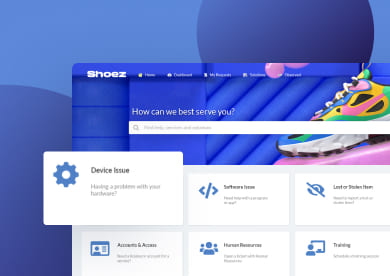Incident Management is the process IT teams use to restore normal service operation as quickly as possible when something goes wrong, while minimizing the impact on the business. A well-run incident management process can save time, reduce repeated errors, and improve user satisfaction.
In this article, we’ll walk through the most effective Incident Management best practices. Some come directly from ITIL, the widely adopted IT Service Management framework, while others reflect practical insights.
Each best practice includes actionable steps so you can apply them in your organization, regardless of the tools you use.

1. Formalize the incident logging process
Logging an incident may seem basic, but a consistent and complete record is the foundation of every successful incident management process. ITIL emphasizes the importance of capturing sufficient information at the time of logging to support proper classification, prioritization, and resolution.
Incomplete or inconsistent logging leads to misrouted tickets, delayed responses, and repeated work. For instance, if a ticket lacks the specific application or service affected, the agent may need to chase the user for clarification, delaying resolution and increasing frustration.
In practice, a standardized incident form can include mandatory fields for:
- Reporter information and contact method.
- A clear description of symptoms.
- Affected service or system.
- Time of occurrence.
- Initial impact and urgency.
Even minor additions, like an initial categorization or keyword tagging, help automate routing and reporting later. Encouraging agents to complete the fields thoroughly without overcomplicating the form balances quality and efficiency.
2. Classify and prioritize incidents effectively
Once an incident is logged, understanding its urgency and impact is essential. Classification helps IT teams identify patterns, assign appropriate resources, and set realistic response expectations. ITIL defines priority based on the combination of urgency (how quickly it needs attention) and impact (the effect on business operations).
Clear priority definitions should include:
- Levels of urgency and impact, with examples for guidance.
- Expected response and resolution times.
- Escalation triggers when SLA targets are missed.
Teams can periodically review past incidents to ensure the classification and prioritization rules reflect reality, adjusting them as new services, users, or business priorities change.
Many modern ITSM tools can automatically assign priorities based on the type of service affected, the number of users impacted, keywords in the incident description, and more. Incident Management automation reduces the chance of human error, speeds up the assignment process, and ensures consistency across teams.
Even more, some advanced tools apply AI for Incident Management, and can help you react to incidents by leveraging historical data.

3. Implement automated routing and assignment
Manual ticket assignment can introduce delays and inconsistencies. Modern ITSM platforms support automated routing using category mapping, keyword detection, or historical resolution patterns. This practice ensures tickets reach the right team or agent promptly, reducing resolution times and avoiding bottlenecks.
To simplify this process, make sure you map categories to the teams most familiar with the affected services. You can also use historical incident data to refine assignment rules and set up alerts for tickets not automatically assigned within a defined timeframe.
But remember that automation is not about removing human oversight entirely. Teams should review the rules periodically and provide a clear fallback process for exceptions. For example, if a ticket’s category isn’t recognized or it meets specific escalation criteria, a human can intervene.
4. Provide clear escalation paths
Escalation ensures incidents are addressed by agents with the appropriate skill level and at the right time. ITIL identifies two escalation types: functional (moving the incident to a more experienced technician or specialized group) and hierarchical (involving management).
Without clear escalation rules, incidents can linger, unresolved or improperly handled, and users can become frustrated. Establishing thresholds for response times and clear handoff procedures prevents this.
Best practices include:
- Documenting the steps for escalation, with responsibilities and expected timelines.
- Ensuring agents know when functional or hierarchical escalation is appropriate.
- Using alerts or automated notifications within your Incident Management tool when escalation triggers are met.
An example could be a critical database outage unresolved after 15 minutes triggers functional escalation to a senior DBA, and if still unresolved after 30 minutes, alerts the IT operations manager. Clear rules like these reduce confusion and improve resolution speed.
5. Use Knowledge Management for faster resolution
Effective Knowledge Management is fundamental to reducing incident resolution times and preventing recurring issues.
ITIL 4 explicitly recognizes Knowledge Management as a critical practice that directly supports Incident Management. According to ITIL 4's Service Value System, the Knowledge Management practice ensures that teams have access to accurate, relevant information to resolve incidents efficiently. ITIL recommends establishing a Known Error Database (KEDB) — a repository of previously identified errors with documented workarounds and resolutions — that can serve as a first-line resource for service desk analysts
Establish a practice where analysts consult the knowledge base as their first troubleshooting step before initiating manual investigation. This "search-first" methodology ensures proven solutions are applied immediately, reserving diagnostic efforts for genuinely new incidents.
6. Monitor and measure performance
Understanding how your incident management process performs is key to improvement. Tracking metrics lets teams identify recurring issues, workflow bottlenecks, and areas where SLAs are not being met. ITIL suggests using performance measurement to guide continual service improvement.
Common metrics include:
- Average time to resolution
- First-contact resolution rate
- Number of reopened incidents
- SLA compliance rates
Monitoring these metrics is most effective when combined with context. For example, a spike in high-priority incidents for a particular application may indicate a systemic problem that warrants a deeper technical review, rather than just a temporary surge in tickets.
Incident Management dashboards to visualize trends, resolution times, and ticket distribution make this information actionable for managers and agents alike, allowing teams to address issues before they affect users broadly.
7. Communicate effectively with users
Transparent, timely communication reduces frustration and sets clear expectations. ITIL emphasizes communication as an integral part of incident management—not a side task. Users who feel informed are less likely to submit duplicate tickets or escalate unnecessarily.
"The best thing to do is be transparent and say what you know right now, not 'we think we got it, we think we know the underlying cause, and we think we're gonna have this back on.' Because you're delivering false hope.”
Georgina Otubela, IT Service Management Leader
Episode 99 of Ticket Volume
Practical communication strategies include:
- Sending acknowledgment messages immediately after ticket creation.
- Providing realistic resolution time estimates, particularly for high-impact incidents.
- Updating users proactively when progress occurs or delays happen.
For instance, during a service outage, automated updates to affected users or departments can cut down repetitive inquiries and give users confidence that the incident is being actively managed.
Communication also extends to internal stakeholders; keeping team leads informed about recurring issues helps plan resources and prevents surprises during critical incidents.
8. Perform post-incident reviews
Post-incident reviews allow teams to learn from incidents and prevent future recurrence. Even small incidents with repeated occurrences can reveal process gaps or systemic issues that need attention.
Effective post-incident reviews include:
- Documenting the sequence of events and resolution steps.
- Identifying contributing factors, whether technical, procedural, or human.
- Recommending preventive actions or process improvements.
For example, if a server outage was caused by an overlooked configuration change, the review might lead to stricter change validation procedures or automated monitoring alerts. Sharing insights from reviews with relevant teams ensures the entire IT organization benefits from lessons learned, reducing similar incidents in the future.
9. Maintain accurate configuration and asset information
Incident resolution depends heavily on knowing the environment you’re supporting. ITIL highlights the role of IT Asset Management (ITAM) and the Configuration Management Database (CMDB) in providing this visibility. When configuration items, system dependencies, and asset details are incomplete or outdated, agents spend valuable time hunting for information instead of resolving the incident.
Accurate configuration and asset data allow teams to:
- Quickly identify affected systems and their relationships.
- Assess the potential impact of incidents on other services.
- Link recurring incidents to specific assets or configurations, aiding Problem Management.
Practical steps to maintain this accuracy include:
- Ensuring all assets — hardware, software, and virtual resources — are recorded in a CMDB with relevant details, including owner, location, version, and support contacts
- Updating records whenever changes occur, such as system upgrades, patches, or service migrations
- Using automation where possible, like discovery tools, to keep asset inventories current without manual effort
- Periodically auditing the CMDB against reality, such as spot-checking servers, network devices, or software licenses, to identify discrepancies
Maintaining this information also strengthens Change Management and Problem Management processes, reduces repeated incidents, and supports compliance requirements by providing traceable records of assets and their configurations. In short, accurate configuration and asset information are the backbone of proactive Incident Management.
10. Continuously improve the process
Incident management processes are most effective when they evolve. ITIL encourages continual service improvement by reviewing incident trends, SLA performance, and user feedback. It's important to ensure workflows remain aligned with business needs, technology changes, and team capabilities.
Practical approaches include:
- Regular audits of incident categories, priority definitions, and assignment rules.
- Collecting feedback from agents and users on process efficiency.
- Testing process changes on smaller scales before full implementation.
By consistently reviewing and learning from incidents, you can continuously refine your Incident Management process and improve your organization's resilience to disruptions.














.jpg?upsize=true&upscale=true&width=780&height=205&name=ITIL%20Foundation%20Exam%20(2).jpg)
